Spoken Seasons
Spoken Seasons
Natural leaves, natural pressed flowers, plaster, golden chain, museum wax, black foam board
21", 24", 3"
Inspiration:
My research started with the nature around me. I frequently take walks outside and this is when I decided that nature needed to be part of the creation of this piece. Nature is all around us and it is constantly changing and going through it's own processes. I found this interesting to note, so I found certain types of leaves and flowers that I found to be what the seasons resemble and used that to begin my work on this piece. My favorite pieces I chose were the bark and the orange seedlings, which I didn't end up using, but the way they felt in my hands reminded me of when in the movie Cinderella, the little mice were eating corn for breakfast, and one of the mice, Gus, had many pieces he couldn't carry at once because they were too slippery to stack all together. The way the corn looked in the film, looked similar to these seedlings, it was as if I got the chance to hold the movie items from the cartoon in real life.
As for the 'Natural History of the Senses', this book gave me a lot of insight on the senses and how they are used. One of the chapters I read was titled, 'Why Leaves Turn Color in the Fall'. In this chapter it discusses how the leaves change color and where the color comes from to begin with. "An odd feature of the colors is that they don't seem to have any special purpose. We are predisposed to respond to their beauty, of course." Each of the colored leaves and flowers I chose all were fallen off the trees and have kept their color. I chose them because I believed they best represented the seasons and how they slowly change into the next. "They remind us that the end of a season is capricious, as is the end of life." This is true. Fall and winter seem to be a time of darkness and an ending, summer and spring resemble new beginnings, which is why they need each other to perform the cyclical beauty of the seasons.
Artist Statement:
Seasons. What do we have to say about the seasons? Not much, honestly. We understand that they are a thing that we can not touch. We can't change this cycle that they share with us, we just accept that it is what it is. Each of these figures resembles a season and the feeling that may come along with that change. Spring, the new beginnings, the cleaning up the old and getting ready for the new. Summer, feeling the warmth of the sun and getting to see the greenery around you. Fall, allowing for the old to pass along and find its way back to the earth. Winter, the bar trees that share themselves in this form until that next seasons can bring them cover with new growth. Each season has its own story to it. The way these gestural figures move makes the seasons speak, but for the most part nature speaks only for itself. The seasons are so different and yet, they all need each other to create a harmonic bond with each other. One that can't be messed with.
The museum wax that is used in this piece to keep everything together gives the sense of impermanence it needs. The seasons come and go and can be expressed differently depending on where you are. The nature used in this piece will too eventually decay and fall apart, but you have to allow for it to do so. All of this is to say that this work won't last and should be accepted for how it is right now.
The golden chain that is used with the flowers, this piece resembles permanence in the piece. I have a permanent bracelet that I received for my birthday when boyfriend too got one for himself. This piece resembles the connection I have with him and how we will never change the way we act around each other. The permanence of the relationship we share is seen with how we interact, but can be resembled through this bracelet. We know that we can rely on each other when we need one another most. The seasons can't be altered, but we can always rely on them to be there during the time they should. The cycle that it takes is too, a permanent thing as well, the seasons will continue to proceed the same way because of the natural order they were put in.
Through these cyclical movements of natural processes, I hope to achieve a sense of familiarity. The connection between how humans interact with earth and the common knowledge of how the seasons change and how we prepare for each other them. I hope there is common ground to stand on for both. As humans, we are curious beings and we constantly seek to make changes to things to make them better, but in this case, we can't change anything. We have to accept and move with the flow of things.
In my art and environment class, we learn a lot about what humans have changed about the earth to help our curious minds understand the world, but here in my piece, perhaps this can be the one thing that shows how we have adapted to what earth gives us. We are curious beings, but in this instance we leave things alone and enjoy what was created for us. I hope this can be the conversation for those wanting to see humans not mess with the earth as much as we have and to just sit back and watch, because when we do, we can see the beauties that the earth naturally has to offer us. The earth can tell us itself what it needs to share about how it works.
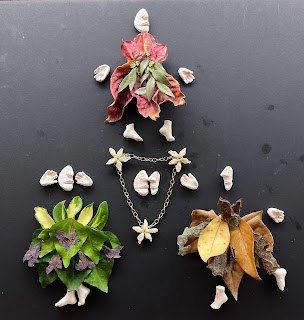

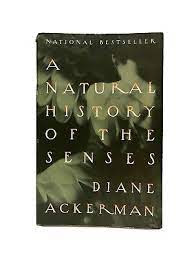















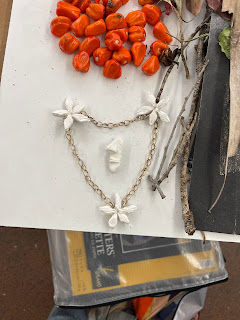













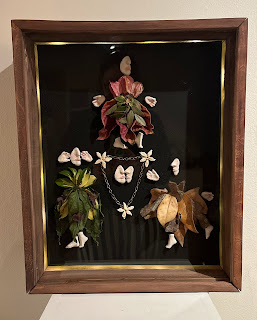
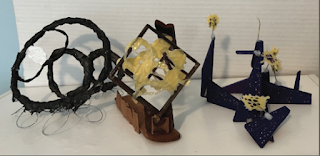
Comments
Post a Comment